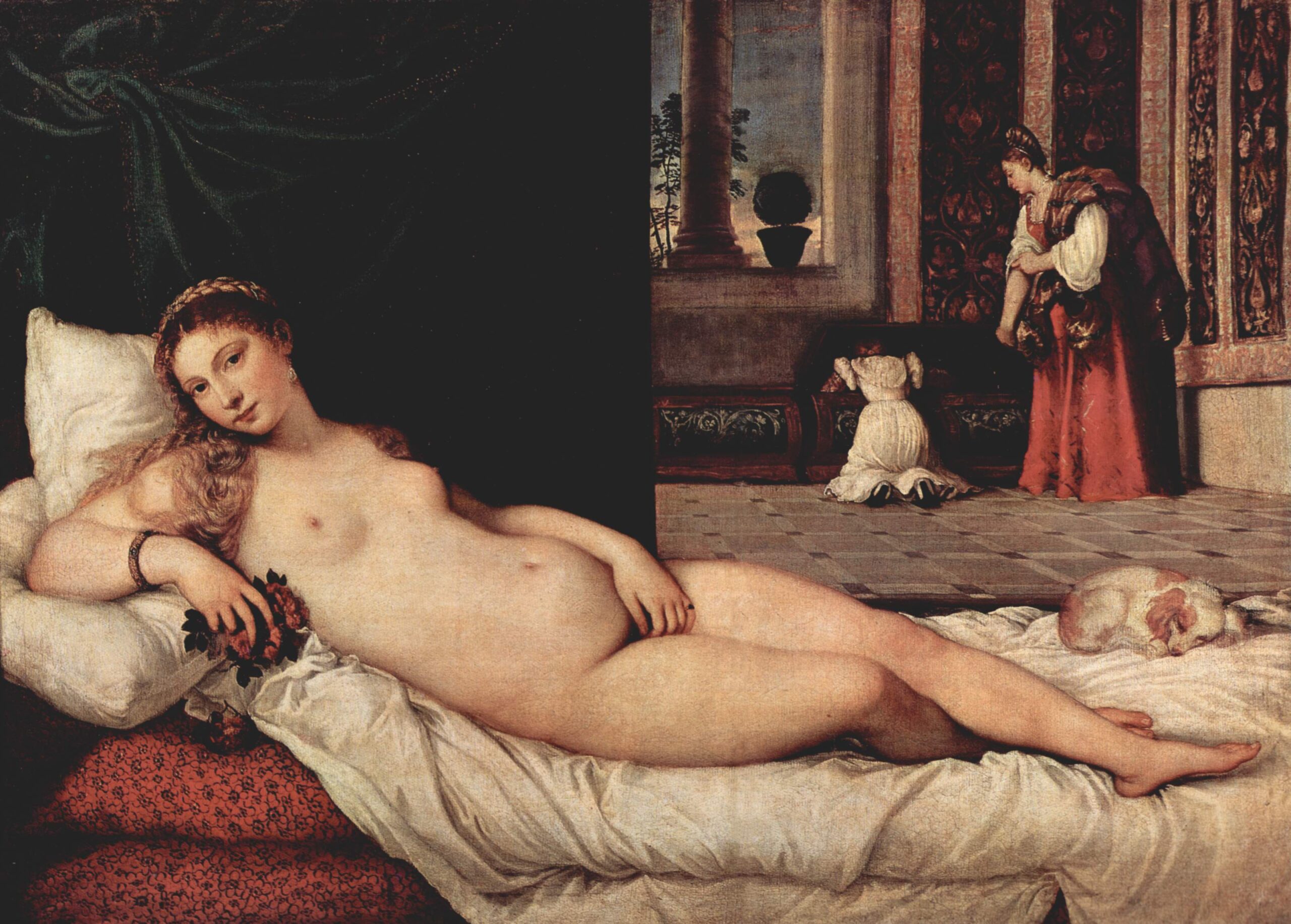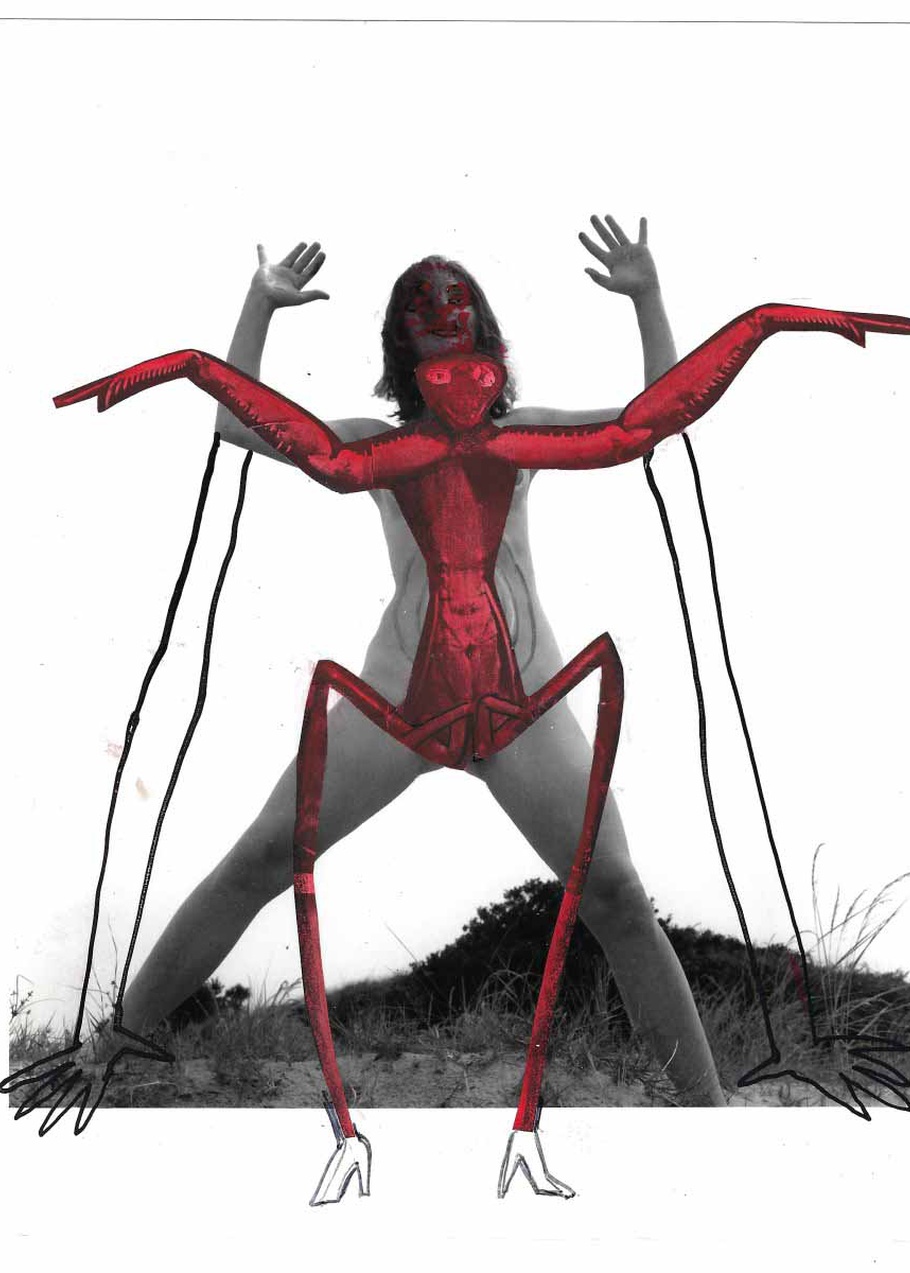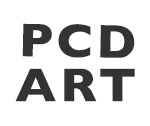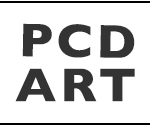The representation of women in art throughout history

Titian – Venus of Urbino (Venere di Urbino) 1538
Throughout the history of art, women have been painted and idolised. However, there has been little representation of women behind the canvas, despite their contributions to the visual arts world.
It appears that many woman artists have been erased from traditional art history; this becomes very apparent when looking at the creators of art throughout time. The vast majority of famous Artists are men many of whom are described as “Master of the arts”. The use of the word “Master” demonstrates that even language is used to promote the idea that a male is the only gender that can be well-practised and respected in this area.
The historical representation of women behind the canvas is minimal. The idea that women should only be seen and admired for their physical form or beauty and not viewed as artists is the central theme of the work of the Guerrilla Girls. This group of feminist activist artists protested at the lack of female artists in the late 20th century. The group highlighting the inequalities between female and male artists by drawing attention to statistics such as only 4% of modern artists in the Metropolitan Museum of Art are female whilst making up 72% of the nudes in the gallery.
Despite the perceived signs of progress in the art world over the last ten years, a report written by Other Words & Artnet News, continues to show a lack of growth for female representation in the art world, with just 2% of global art auction spending on work by female artists. The figure of 2% is also unevenly distributed, with five artists making up 40.7% of the total and Yayoi Kusama in particular accounting for 25% alone. Furthermore, the report highlighted that collections from 18 major Art institutions were both 85% white and 87% male.


Madonna in the Meadow 1505 – 1506 Raphael
Emily Sartain – Study, Female Head, 1878, oil on canvas
The idea of what art is and who creates it has been debated throughout the 20th century. The view that women have been systematically erased from the history of the art world is illustrated very well illustrated in an essay by Linda Nochlin titled ‘Why Have There Been No Great Female Artists” (1971). It is a pioneering essay for both feminist art history and feminist art theory and indicates the social change that was starting to occur at the time.
However, despite claimed changes in social attitudes towards equality and inclusion, the Guerrilla Girls believed that little real had changed since the1970s. Many women today would argue that the most outstanding female artists levels of recognition has never been the same as their male counterparts, not due to a lack of skill, but rather to the misogynistic ideas that were popularised earlier in history and which are still enforced by patriarchy today.
The idea that women were subordinate beings who were lesser than their male counterparts were not capable of achieving mastery in the arts resulted in female artists being pushed out of the art world and ignored. Of course, to understand the representation of women in art, it’s vital to look at different periods so in this essay I will look at four different periods and compare the changes and development of the representation of women in art.
The idea that women were good enough to be painted, but not to paint was explored by Lynda Mead in her book titled “The Female Nude: Art, Obscenity, and Sexuality published in 1992. In which she explores the ideas that a naked woman being painted is seen in western civilisation as high art. She reveals how the female nude is now both at the centre and at the margins of high culture. She argues that the representation of the female in art, in a nude form, is at the centre seen as the visual culmination of the enlightenment and aesthetics whilst at the margins it moves towards the obscene.


Adolph Treidler For Every Fighter a Woman Worker. Care For Her Through the YWCA c. 1918
Käthe Kollwitz The People 1922 – Tate Gallery
This misogynist view has led to many beautiful and famous paintings of women, however, very few female painters. Throughout history, women have been idolised in the arts for their physical form as exemplified by the Madonna painted in the Renaissance period. Although a beautiful work of art and important figure for those who are religious many feminists would argue the Madonna represents everything that’s wrong with the representation of women on the canvas. Because when walking through a typical renaissance gallery, one would struggle to find a female who is not based on the Madonna.
The physical form was also presented with a full body and small breasts which was not the typical female figure of the period, rather one that was lusted after. However, whilst being presented with an idolised body, the Madonna is also the symbol of virginity and purity enforcing the idea that for women to be celebrated, they must not only be beautiful but also pure. An idea that reinforces the patriarchal standards for women and the idea that the female form is an object to be admired, but they are only to be admired when they are young and pure.
Lynda Mead argues in her book that the idea of women both in art and society being idolised results from the increasing power of men in a capitalist world. Where the gender roles are allowed to fully develop, she argued that you could see the transition of male-female roles when comparing art from the Middle Ages to the Renaissance compared previously under the feudal system where women and men were mostly equal. A telling sign of this increasing inequality gap can be seen from how masters of Renaissance art, including Leonardo da Vinci Michelangelo and Raphael, viewed females in an idolised manner as I have discussed previously.
There is an evident lack of female artists during this period. Perhaps not surprising given the male-only structure of the art guilds that controlled painting in the Renaissance. The first notable female Renaissance artist was Sofonisba Anguissola, who was not from either of the established cultural centres of Italy but was born in 1523 in Cremona Lombardy. But her works only started to widely appear in the 16th century, not the in 15th century when the Renaissance began.
I think this represents the change in cultural attitudes towards women in the Arts, demonstrating that Italy moved to highly skilled women taking part in and creating art rather than playing a passive role of siting to be represented in works of art. Even if women defied the rules implied by the society, they were faced with heavy criticism.
It was not till three centuries later in the 19-century women began to exist in the art sphere; however, they continued to be viewed as separate and unequal to their male counterparts. Yet, in 1876, a milestone was reached during the Philadelphia Centennial Exposition where women artists created around a tenth of the artworks presented. American portrait painter and engraver, Emily Sartain, became the first and only woman to receive a Centennial Gold Medal awarded for her a painting titled “The Reproof.
The Centennial International Exhibition also included another first and that was the construction of a women’s pavilion that highlight the work of women with the exhibits being created and operated by women. The separate pavilion is perhaps emphasising the idea of women being separate and unequal. However, it represents a considerable change from the exclusion that women faced during the Renaissance period.
But the changes still fell far short of the inclusion that leading feminist thinkers have been fighting for since the start of the 20th century. In the 19th century, the power of women in the art world was still remarkably limited. The term “New Women’ was coined by the Irish writer Sarah Grand in an influential article published in 1894.
The “New Woman Movement” was a feminist ideal that supported women to fight against restrictions limiting their sphere of influence to the home and family life with all their worth being placed and measured on being a good wife and mother. It sought to have women to exercise more control over their lives, both socially and economically.
Emily Sartain an acknowledged progressive and New Woman pushed against society’s limits, especially those limits set by a male-dominated society. Sartain formed the woman’s organisation, the New Century Club, which acted as a meeting place for the New Women Movement members to meet and to promote “science, literature and art. As the Director of the Philadelphia School of Design for Women, she was a pioneer for the advanced education of women in the Arts.


Georgia O’Keeffe – Gray Line with Black, Blue and Yellow, 1923
Isabel Bishop: Noon Hour, 1935 — Weisman Art Museum
The “New Woman Movement” was a feminist ideal that supported women to fight against restrictions limiting their sphere of influence to the home and family life with all their worth being placed and measured on being a good wife and mother. It sought to have women to exercise more control over their lives, both socially and economically.
Emily Sartain an acknowledged progressive and New Woman, pushed against society’s limits, especially those limits set by a male-dominated society. Sartain formed the woman’s organisation, the New Century Club, which acted as a meeting place for the New Women Movement members to meet and to promote “science, literature and art. As the Director of the Philadelphia School of Design for Women, she was a pioneer for the advanced education of women in the Arts.
The New Woman movement and the resulting changing the face of society was a significant influence in the art sphere. New Women were becoming the subject of art and this new way of life further inspiring women to push through the barriers encouraging them to take part in society§ perhaps explaining the sudden increase in the presence of women in art.
This period shows how politics and societal standards have the power to change and develop not only the world we live in but also influencing creative thinking and output.
This period saw the creation of more works of art that did not focus on the nudity or physical form of women but instead activities that they partake. I think this period is the first time we can see a wave of feminist action changing the art world and the way women are perceived. Making this period in my mind a particularly significant moment for the representation of females in art.
Even so, women’s art continued to presented in a separate but equal manner which wasn’t necessarily equal. However, it was a large step forward for woman artists and the female archetype leading to a progression and development of what a woman is. Woman were no longer portrayed as two-dimensional characters like those of the renaissance period, where the Madonna was the ideal women defined by perceived beauty, grace and purity. Whereas with the progress achieved at the time by the emerging feminist movement, the modern New woman was defined by her education, skills and cultural upbringing. Fashion as an aesthetic expression of art also played a part in determining what a woman should be.
The next period I will be considering is the 20th century. This period was a time of significant change for women’s rights. A critical important to consider both the 1920s marking a pivotal moment for women’s rights where the idea of women’s suffrage was popularised and where women in the UK received the vote in the representation of the people act (1928) furthermore in the mid to late 19th century the idea of second-wave feminism was developed catalysed by Betty Friedan book the feminine mystique where the notion that women weren’t happy with their lives as housewives and wanted more and was meant to show the discontent amount women who felt pressured to make a home despite their college degrees.
When determining how these changes impacted on the position of women in art, one of the most important things to consider is the changing role of women during World War 1 (1914-1918). Due to the lack of men in society due to their part in the war, women were suddenly allowed into the workforce to do “men’s jobs”. They were suddenly presented as strong independent individuals who were essential to the success of the country. Which dramatically and irrevocably changed women’s role in society as they now had to carry the burden of supporting the household both financially and emotionally. This translated into the art world with the emergence of female artists such as Kathe Kollwitz, a German artist. She was known for her Graphic post-impressionist art style, which included an expressionist female form with the themes of social protest and urgency.
However, despite this, the Archetypes of women the Madonna and the femme fatale remained in the surrealist movement, despite the large cohesive group of women surrealist artists including Remedios Varo, Leonor Fini, Leonora Carrington, and Dorothea Tanning who explored surrealism—demonstrating that despite the changing social attitudes towards women, the art world was slower to adapt to the new ideals of thinking and slower widen their perspective to include women as not just nude subjects but as thinkers.
I think this links back to the ideas presented by Lynda Mead in her book The Female Nude, where she argues that nudes of women were considered the highest form of art in western culture. Providing a reason why the great Art masters of the 19th century were slower to adapt to the new standards for women as it directly contradicted the ideals that they believed made great art.
However, an even more, significant change occurred in the American art world of the 1930s following the aftermath of the great depression. The art world came under the jurisdiction and patronage of the American government with the introduction of the New Deal Art Program. This presented woman with two major opportunities that they previously didn’t have. The right to participate in major exhibits with equal access to funding and the right to be judged on the same basis as men.
Louise Nevelson, Alice Neel, Lee Krasner, and Isabel Bishop were among the 41% of women artists who received aid during this period. Despite this support, little lasting change was achieved even though several groups such as the National Association of Women Artists and the New York Society of Woman Artists were formed bring about equality in the Arts. They were later dismissed as left-wing feminists resulting in change that was less permanent than many female artists had hoped to achieve.
By the 1950s, women inArtt were once again quite heavily restricted and excluded women from the abstract movement due to the traditional male culture prevalent during the 1950s. This left woman with little opportunity to promote or show their work which was deemed trivial and incidental. The 1950s promoted the retrograde idea once again of women being seen as the heart of the home with their role as wives and mothers. Resulting in female artists of the 1950s being ignored and their demands for equality were seen as a threat in the western world to society.
As a result of the prevailing view of the sanctity of family life, there were a few female artists who achieved d recognition in this period. A notable exception was Georgia O’Keeffe who is now credited as being the Mother of American modernism. However, her battle for recognition in the art world she argued to achieve recognition her accomplishments must not be larked as female. Perhaps this why she was able to achieve so much in the 1950s as she did not seek to change the status quo, instead was happy to work within it.
However, in contrast to O’Keeffe’s view, “Feminist Art” and ideals began to reappear in the 1970s with women once again challenging the male-dominated art world. The feminist art movement sought to break creative boundaries and the glass ceiling of recognition. One of the most iconic art activist groups from this period is the Guerrilla Girls. Using outrageous visuals, they expose gender and ethnic bias as well as corruption in politics, art, film, and pop culture. They remained anonymous to keep the focus on feminist issues. Other famous artists from this period include Mary Beth Edelson, Cindy Sherman, Lynn Hershman Leeson and Hannah Wike. The artists provided an alternative way of presenting women, no longer sticking to the status quo of women being seen but not heard in the world of art.

This is one of thirty posters published in a portfolio entitled Guerrilla Girls Talk Back by a group of anonymous American female artists who call themselves the Guerrilla Girls. © courtesy www.guerrillagirls.com
Other famous artists include Cindy Sherman and Judy Chicago sparked by art historian Linda Nochlin’s essay “Why Have There Been No Great Women Artists?” took a radical direction and examined the role of women in culture and society and challenging the systems in place through activism.
This revolution in the Arts, I would argue was also primarily influenced by the second wave of feminism that was triggered by Betty Friedan book the feminine mystique, which was published in 1963. Friedan’s work focused on women’s lack of place in the workforce despite their qualifications and their dissatisfaction with their purpose solely reliant on their work in the home.
This links well with the timeline of the feminist movement in the Art world, which led to an increased awareness of the inequality that women in the art world faced. However, little could change due to the deep-rooted sexism in the art world. It was pointed in a report published by the Los Angeles Council of Women Artists in 1971 only 29 out of 713 artists whose works appeared in group shows at the Los Angeles County museum in previous ten years were women”, and out of 53 one-person exhibitions, only one was female.
The inequality and lack of access for female artists led protests and threats of Civil action against the LACM. The feminist movement was also influenced by the rise of a series of protests at the Whitney Museum of American Art and the Los Angeles County Art Museum. The Ad Havoc Women’s Art Committee, an international group of women artists, organised the New York Whitney protests in 1970, leading to a rise in women’s exhibitions in the museum from 5% to 20% in one year. Showing the stark inequality that remained in the art world thus, when looking at the 1970s, we can consider the fact that the art world, although experiencing a significant change in attitudes towards it. Due to the ingrained sexism of the art world was still shut out and excluded women from significant or prominent roles in the world of art.
Linda Nochlin asked a challenging question in 1971, and it is one that has still not been answered to this day. The question was posed in her essay that has famously helped to shape the feminist art history movement, she asked: “Why have there been no great women artists?”
The physical representation of women in art during the 1970s remained largely the same. However, feminist artists began to provide other ways of women being represented supported by the artists, including Mary Beth Edelson, Cindy Sherman, Lynn Hershman Leeson, and Hannah Wike. Known as the Feminist Avant-Garde this group against the establishment and provided an alternative way for women to be presented; however, these alternative representations were definitely in the minority.


Cindy Sherman
Mary Beth Edelson Bon Apetit, Dining Out, 1973
Despite these changes in attitude, the statistics show women remain poorer, although in a slightly improved position compared to their male counterparts. Statistics show that in 2018 of the 20 most popular exhibitions around the world, only one was Headlined by a woman artist: Joana Vasconcelos: I’m Your Mirror at the Guggenheim Bilbao. (“2018’s most visited shows and museums,” The Art Newspaper). An even more stark statistic is given in the “2018 The Global Art Market Report” (Art Basel/UBS which showed that of the 3,050 galleries in the Artsy database, 10% represent not a single woman artist, while only 8% represent more women than men. Almost half represent 25% or fewer women. The US National Endowment for the Arts (NEA) found that as women artists age, they earn progressively less than their male artist counterparts and Women artists aged 55–64 earn only 66¢ for each $1 earned by men.
Overall, l would argue that things have improved throughout the years for women in the Arts. I would further argue that women are still largely excluded from the art world today and that feminist artists sill have many issues to push through despite the positive change.
Moreover, when looking at the representation of women in the Art world throughout history, I would argue that the physical manifestation of women hasn’t changed that much. There has been, however, increasing diversity in the way women are presented. Though on this point I would argue the traditional representation of woman as seen in Venus by Bottocheli continues to represent the idea of a beautiful perfect woman as a style/idea to this day and one that continues to form the majority of celebrated art.
I would argue that change has occurred when looking throughout the theme periods how’re it is not as stark as some would assume considering the social changes that took place. When looking at women in art behind the canvas, I would assert that a lot of change has taken place compared to Renaissance women who were pushed out of the picture altogether and excluded from the Art Guilds which were controlled by men.
I would argue that the changes we can see are slow and take time; perhaps this is due to the tradition and prestige which many Art Galleries value. However, change is occurring even if when looking at the figures today of women in the art world they are not as great as expected when comparing it to the values and majority opinion of society however I think that as long as feminist artists such as Cindy Sherman continue to push forward and continue to break boundaries women can be represented just as much as men in art.
Poppy Collier-Doyle 8th November 2020
Bibliography
The Guardian 2013 Women in Art: why are all the ‘great’ artists men? Can be accessed at https://www.theguardian.com/lifeandstyle/the-womens-blog-with-jane-martinson/2013/may/24/women-art-great-artists-men (Accessed on September 10 2020)
The Guardian Sept 2019 only 2% of global art auction spending is on work by women, study finds can be accessed at
https://www.theguardian.com/artanddesign/2019/sep/19/female-art-women-underrepresented-museums-auctions-study (Accessed October 23 2020)
Google Arts and culture by Alexandra Clark: representation of women in art through the ages can be accessed at
https://artsandculture.google.com/usergallery/representation-of-women-in-art-through-the-ages/jwKisGWJM5SWKA (Accessed September 5 2020)
Women in Art History Artistic Representation of the Female Gender from the Renaissance to the Enlightenment by KATRYNA SANTA CRUZ published by Boston university guided history accessed at
http://blogs.bu.edu/guidedhistory/historians-craft/katryna-santacruz/ (Accessed July 31 2020)
Tate talking point What does it mean to be a woman in art? accessed at
https://www.tate.org.uk/art/tate-exchange/women-in-art (Accessed October 1 2020)
Google books The Female Nude: Art, Obscenity, and Sexuality by Lynda Mead synopsis accessed at
https://books.google.com/books/about/The_Female_Nude.html?id=0PoNAAAAQAAJ&hl=en (Accessed September 5 2020)
Get the facts Learn about gender inequity in the arts with some eye-opening facts. accessed at
https://nmwa.org/support/advocacy/get-facts/ (Accessed on September 22 2020)
Christie’s Taking the reins: The ‘New Woman’ in 19th-century painting accessed at
https://www.christies.com/features/The-rise-of-The-New-Woman-in-19th-century-art-8988-1.aspx (Accessed August 12 2020)
Taking the reins: The ‘New Woman’ in 19th-century painting B.Ed., The University of British Columbia, 1976 MYRA ANNE EADIE pp 54-72 can be accessed
https://open.library.ubc.ca/media/download/pdf/831/1.0095702/2 (Accessed August 22 2020)
The Tate Modern Guerrilla Girls – accessed at
https://www.tate.org.uk/art/artists/guerrilla-girls-6858 (Accessed on August 10 2020)
Hyperallergic a Timely but Limited Look at Feminist Art from the 1970s by Jessica’s freeman – Atwood 2017 can be accessed on
https://hyperallergic.com/349546/a-timely-but-limited-look-at-feminist-art-from-the-1970s/
(Accessed on September 5 2020)
The Guardian feminist art of the 1970s knives nudity and terrified men by Fisun Güner 2016 can be accessed on
https://www.theguardian.com/lifeandstyle/womens-blog/2016/oct/03/feminist-art-of-the-1970s-knives-nudity-and-terrified-men (Accessed on August 25 2020)
Women Art and society- book by Book by Whitney Chadwick published March 1, 1990, published by Thames & Hudson
Alexanderaderadasmart Georgia O’Keeffe & Feminism March 20, 2019, Alexander Adams
Can be accessed at
https://alexanderadamsart.wordpress.com/2019/03/20/georgia-okeeffe-feminism/ (Accessed on September 10 2020)
Wikipedia the feminine mystique 2020 can be accessed on
https://en.wikipedia.org/wiki/The_Feminine_Mystique (Accessed on September 10 2020)
The Guardian, Only 2% of global art auction spending, is on work by women, study finds guardian staff 2019 can be accessed on
https://amp.theguardian.com/artanddesign/2019/sep/19/female-art-women-underrepresented-museums-auctions-study
(Accessed on September 1 2020)
Get the Facts About Women in the Arts | NMWA. https://nmwa.org/support/advocacy/get-facts/
(Accessed on September 10 2020)




